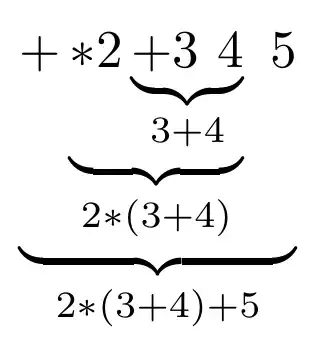Mathematical equations are generally expressed in a sequential form known as 'infix notation'. It is characterised by the placement of operators between operands. To make the order of the operations in the Infix notation unambiguous, a lot of parenthesis are needed. Infix notation is more difficult to parse by computers than prefix notation (e.g. + 2 2) or postfix notation (e.g. 2 2 +).
There is a deep learning approach to symbolic mathematics recommended in the research paper by Guillaume Lample and François Charton. They have found an interesting approach to use deep neural networks for symbolic integration and differentiation equations. This paper proposes a syntax for representing mathematical problems, and methods for generating large datasets that can be used to train sequence-to-sequence models.
Deep Learning for Symbolic Mathematics

This approach is essentially representing mathematical problems in prefix notation. First a symbolic syntax tree is constructed that captures the order and values of the operations in the expression. Second, the tree is traversed from top to bottom and from left to right. If the current node is a primitive value (a number), add it to the sequence string. If the current node is a binary operation, add the operations symbol to the sequence string. Then, add the representation of the left child node (could be recursive). Then, add the representation of the right child node. This procedure resulted in the following expression.

We can expect further more advances in this area with the emergence of better symbolic learning models leveraging attention based transformers and other neural symbolic learning models. Recent work by MIT, DeepMind and IBM has shown the power of combining connectionist techniques like deep neural networks with symbolic reasoning. Please find the details in the following article.
The Neuro-Symbolic Concept Learner

